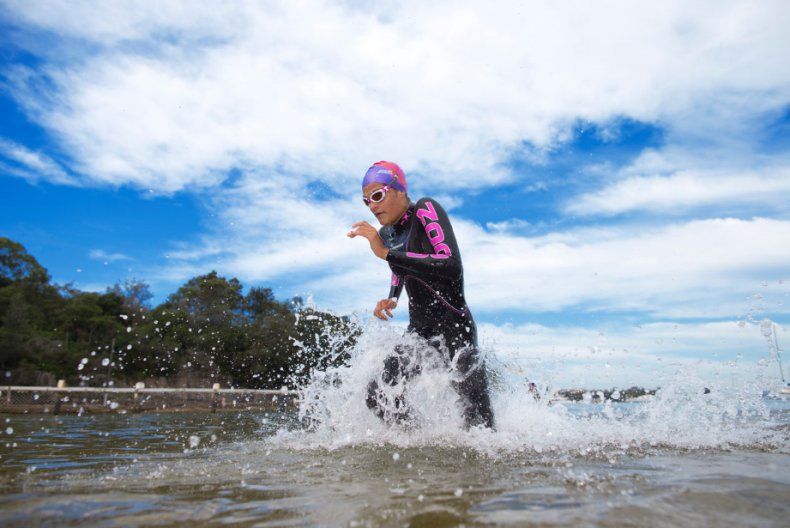
From Wetsuits to Goggles: Essential Tri Gear for Beginners

Thinking of taking on a triathlon this year? You’re not alone. According to British Triathlon, this fast-growing sport has become increasingly popular across the UK, with hundreds of new clubs and events running every year.
But what kind of clothing or equipment do you actually need to swim, cycle and run to the finish line? Our expert team at Zoggs have put together a beginner's’ guide to essential tri gear and some tips for making the most of it:
Triathlon Swimming:
- Swimsuit or Tri suit
Regular swimwear is great for basic training but you’ll need to practice swimming in a wetsuit to prepare for your event. To achieve the best race time, choose bike shorts or a tri-suit that fits comfortably under your wetsuit and wear the same clothes for the entire event.
- Wetsuit
Aside from training in your wetsuit, practice taking it off to shave valuable seconds off your race time. Experienced triathletes use a lubricant to get their wetsuits on and off with ease and prevent chafing.
- Swimming Cap
If you have long hair, tie it in a low bun or ponytail that sits comfortably under both your swimming cap and cycle helmet. Not to mention the added warmth provided.
- Goggles
Goggles that adapt to the light are ideal as they optimise your vision in any conditions. For performance, comfort and flexibility, Zoggs Aquaflex Goggles were recently voted as a ‘Best Buy’ by 220 Triathlon magazine.
- Transition Towel
Drying your face and feet quickly will help make the transition from swimming to cycling more comfortable, but be aware that each race event has specific rules about how you make that transition so read them carefully to avoid any penalties.
Triathlon Cycling:
- Bike
At entry-level triathlons, any bike that’s in good condition should be suitable. Make sure the chain and gears are oiled, the tyres are properly inflated and a water bottle carrier is fixed to the handle stem or crossbar.
- Bike shoes
The kind of bike shoes you wear will depend on whether your bike is fitted with basic, toe-clip or clipless pedals. The advantage with basic and toe-clip pedals is that you don’t need specialist footwear so can save transition time by wearing trainers for both the cycling and running sections, but the advantage of clipless pedals is that you can cycle more efficiently and at greater speed; the choice is yours.
- Socks
These are optional but they can make the cycling and running sections of a triathlon much more comfortable.
- Cycle Helmet
These are usually mandatory and although safety comes first, there’s a wide range of helmets that are designed to aid your aerodynamic performance. Practice putting your helmet on with your sunglasses to achieve smooth and quick transitions.
- Sunglasses
These will help you focus clearly on distance markers, but also help protect your eyes from any surface dust or grit kicked up by the tyres and feet of your competitors.
- Race Belt
Every triathlon competitor is issued with a race number and this must be clearly visible on your back for cycling and front for running. A race belt makes this easy, simply attach your race number and switch it around as necessary.Triathlon Running
- Running Shoes
If you’re planning to wear separate cycling and running shoes, make sure they are lightweight, comfortable and easy to get on and off quickly; Velcro fastenings and a little Vaseline around the entry will help.
- Peaked Hat
These should be used in conjunction with your sunglasses, not in place of them. They help keep sun and sweat out of your eyes and protect your head from damaging UV rays.
And finally, you'll need somewhere to store all of your essentials. We recommend the Zoggs Triathlon Training Bag - the ultimate training bag for any triathlete.
That’s it! Now you know what you need, you’re ready to start piecing your triathlon kit together and begin training for your first event. A full list of clubs and races in your area can be found online at British Triathlon.












